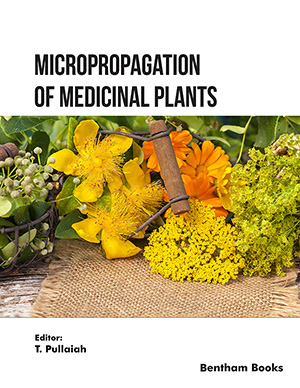Abstract
Hypoxia is a classical function of the tumor's microenvironment with a substantial effect on the development and therapeutic response of cancer. When put in hypoxic environments, cells undergo several biological reactions, including activation of signaling pathways that control proliferation, angiogenesis, and death. These pathways have been adapted by cancer cells to allow tumors to survive and even develop in hypoxic conditions, and poor prognosis is associated with tumor hypoxia. The most relevant transcriptional regulator in response to hypoxia, Hypoxia-inducible factor-1 alpha (HIF-1α), has been shown to modulate hypoxic gene expression and signaling transduction networks significantly. The significance of non-coding RNAs in hypoxic tumor regions has been revealed in an increasing number of studies over the past few decades. In regulating hypoxic gene expression, these hypoxia-responsive ncRNAs play pivotal roles. Hypoxia, a general characteristic of the tumor's microenvironment, significantly affects the expression of genes and is closely associated with the development of cancer. Indeed, the number of known hypoxia-associated lncRNAs has increased dramatically, demonstrating the growing role of lncRNAs in cascades and responses to hypoxia signaling. Decades of research have helped us create an image of the shift in hypoxic cancer cells' DNA repair capabilities. Emerging evidence suggests that hypoxia can trigger genetic instability in cancer cells because of microenvironmental tumor stress. Researchers have found that critical genes' expression is coordinately repressed by hypoxia within the DNA damage and repair pathways. In this study, we include an update of current knowledge on the presentation, participation, and potential clinical effect of ncRNAs in tumor hypoxia, DNA damage reactions, and genomic instability, with a specific emphasis on their unusual cascade of molecular regulation and malignant progression induced by hypoxia.
Keywords: Hypoxia, tumor microenvironment, non-coding RNAs, DNA damage and repair, genomic instability, tumor hypoxia, phenotypes.
[http://dx.doi.org/10.1177/1535370214532755] [PMID: 24812122]
[http://dx.doi.org/10.3109/09553002.2014.916841] [PMID: 24844374]
[http://dx.doi.org/10.1038/nrc1187] [PMID: 13130303]
[http://dx.doi.org/10.3390/ijms21165611] [PMID: 32764403]
[http://dx.doi.org/10.1042/bj20021162] [PMID: 12215170]
[http://dx.doi.org/10.1074/jbc.M312254200] [PMID: 14701857]
[http://dx.doi.org/10.1126/stke.3062005re12] [PMID: 16234508]
[http://dx.doi.org/10.3390/cells9112353] [PMID: 33113836]
[http://dx.doi.org/10.1186/1476-4598-10-38] [PMID: 21489289]
[http://dx.doi.org/10.1007/s00439-018-1955-3] [PMID: 30386939]
[http://dx.doi.org/10.1158/0008-5472.CAN-19-0910] [PMID: 31201165]
[http://dx.doi.org/10.1038/ng.3192] [PMID: 25599403]
[http://dx.doi.org/10.1186/s12943-016-0530-6] [PMID: 27233618]
[http://dx.doi.org/10.1128/MCB.01301-08] [PMID: 18981219]
[http://dx.doi.org/10.3390/ijms131113949] [PMID: 23203043]
[http://dx.doi.org/10.1016/j.clon.2014.02.002] [PMID: 24602562]
[http://dx.doi.org/10.1259/bjr.20170955] [PMID: 29513032]
[http://dx.doi.org/10.1172/JCI84427] [PMID: 27482883]
[http://dx.doi.org/10.1002/1878-0261.12573] [PMID: 31529615]
[http://dx.doi.org/10.1016/j.ijrobp.2017.11.043] [PMID: 29485045]
[http://dx.doi.org/10.1080/09553000601002324] [PMID: 17118889]
[http://dx.doi.org/10.1089/ars.2013.5378] [PMID: 24512032]
[http://dx.doi.org/10.1259/bjr.20200087] [PMID: 32551913]
[http://dx.doi.org/10.2217/14796694.3.3.329] [PMID: 17547528]
[http://dx.doi.org/10.2147/HP.S93413] [PMID: 27774485]
[http://dx.doi.org/10.2174/138161209789649394] [PMID: 19671042]
[http://dx.doi.org/10.1128/MCB.00067-16] [PMID: 27090638]
[http://dx.doi.org/10.1186/s12964-020-00586-x] [PMID: 32493394]
[http://dx.doi.org/10.1111/febs.14577] [PMID: 29893496]
[http://dx.doi.org/10.1007/s10555-007-9056-0] [PMID: 17440683]
[http://dx.doi.org/10.1007/s13277-014-2838-4] [PMID: 25412955]
[http://dx.doi.org/10.1007/978-3-540-46091-6_16] [PMID: 17607926]
[http://dx.doi.org/10.1016/j.radonc.2005.06.036] [PMID: 16098621]
[http://dx.doi.org/10.1038/sj.emboj.7600998] [PMID: 16467844]
[http://dx.doi.org/10.1016/j.semcdb.2005.03.009] [PMID: 15896987]
[http://dx.doi.org/10.1158/0008-5472.CAN-03-3196] [PMID: 15026343]
[http://dx.doi.org/10.1002/ijc.21088] [PMID: 15849743]
[http://dx.doi.org/10.1016/S0168-3659(99)00248-5] [PMID: 10699287]
[http://dx.doi.org/10.1146/annurev-pathol-012513-104720] [PMID: 23937437]
[http://dx.doi.org/10.1016/j.yexcr.2015.04.010] [PMID: 25912909]
[http://dx.doi.org/10.1016/j.apsb.2020.04.004] [PMID: 33304783]
[http://dx.doi.org/10.1158/0008-5472.CAN-13-0992] [PMID: 24336068]
[http://dx.doi.org/10.1084/jem.20131916] [PMID: 24778419]
[http://dx.doi.org/10.1158/1535-7163.MCT-10-1010] [PMID: 21460102]
[http://dx.doi.org/10.1517/14728222.2010.511617] [PMID: 20854179]
[http://dx.doi.org/10.1172/JCI43505] [PMID: 21393866]
[http://dx.doi.org/10.1016/j.tcb.2011.04.001] [PMID: 21550244]
[http://dx.doi.org/10.4161/rna.20481] [PMID: 22664915]
[http://dx.doi.org/10.1038/onc.2011.621] [PMID: 22266873]
[http://dx.doi.org/10.1016/j.cmet.2017.10.005] [PMID: 29129785]
[http://dx.doi.org/10.1186/s12929-017-0358-4] [PMID: 28789687]
[http://dx.doi.org/10.1016/j.gene.2015.08.049] [PMID: 26341058]
[http://dx.doi.org/10.1007/s13277-015-4457-0] [PMID: 26608368]
[http://dx.doi.org/10.1038/onc.2014.200] [PMID: 25023702]
[http://dx.doi.org/10.1186/s12929-020-00654-x] [PMID: 32370770]
[http://dx.doi.org/10.1038/ncb3295] [PMID: 26751287]
[http://dx.doi.org/10.1016/j.bbamcr.2019.118523] [PMID: 31401107]
[http://dx.doi.org/10.18632/oncotarget.23732] [PMID: 29535820]
[http://dx.doi.org/10.1038/onc.2017.368] [PMID: 29106390]
[http://dx.doi.org/10.1038/srep45029] [PMID: 28327666]
[http://dx.doi.org/10.1016/j.bbamcr.2010.01.010] [PMID: 20117150]
[http://dx.doi.org/10.1038/srep24141] [PMID: 27063004]
[http://dx.doi.org/10.1038/cddis.2017.181] [PMID: 28492542]
[http://dx.doi.org/10.1038/onc.2016.19] [PMID: 26973243]
[http://dx.doi.org/10.1002/jcb.27327] [PMID: 30216500]
[http://dx.doi.org/10.2147/OTT.S173816] [PMID: 30588022]
[http://dx.doi.org/10.1159/000493445] [PMID: 30205391]
[http://dx.doi.org/10.1186/s13046-019-1188-x] [PMID: 31088485]
[http://dx.doi.org/10.18632/oncotarget.6806] [PMID: 26735578]
[http://dx.doi.org/10.1016/j.bbrc.2019.08.039] [PMID: 31421822]
[http://dx.doi.org/10.2174/1568009620666210106122421] [PMID: 33413062]
[http://dx.doi.org/10.1186/s12935-016-0349-7] [PMID: 27688736]
[http://dx.doi.org/10.1111/cas.13519] [PMID: 29383777]
[http://dx.doi.org/10.1007/s12094-019-02035-9] [PMID: 30690667]
[http://dx.doi.org/10.1158/0008-5472.CAN-14-0686] [PMID: 25277524]
[http://dx.doi.org/10.1016/j.neo.2014.10.008] [PMID: 25499222]
[http://dx.doi.org/10.1038/s41388-018-0382-1] [PMID: 29970904]
[http://dx.doi.org/10.18632/oncotarget.6830] [PMID: 26755660]
[http://dx.doi.org/10.7150/thno.34559] [PMID: 31410216]
[http://dx.doi.org/10.7150/thno.30988] [PMID: 31367258]
[http://dx.doi.org/10.1186/s12943-017-0738-0] [PMID: 29121972]
[http://dx.doi.org/10.1002/jcp.28188] [PMID: 30693518]
[http://dx.doi.org/10.1016/j.biochi.2017.10.002] [PMID: 29017924]
[http://dx.doi.org/10.1016/j.molcel.2013.01.010] [PMID: 23395002]
[http://dx.doi.org/10.3324/haematol.2019.218289] [PMID: 31289203]
[http://dx.doi.org/10.1038/ncomms15874] [PMID: 28639619]
[http://dx.doi.org/10.1002/pros.23367] [PMID: 28585762]
[http://dx.doi.org/10.3390/ijms20164012] [PMID: 31426484]
[http://dx.doi.org/10.1007/s13277-015-3453-8] [PMID: 26088446]
[http://dx.doi.org/10.33594/000000026] [PMID: 30845377]
[http://dx.doi.org/10.1002/1878-0261.12437] [PMID: 30614188]
[http://dx.doi.org/10.3389/fcvm.2018.00159] [PMID: 30456215]
[http://dx.doi.org/10.2147/OTT.S169155] [PMID: 30122945]
[http://dx.doi.org/10.1038/s41419-019-1769-9] [PMID: 31308358]
[http://dx.doi.org/10.3109/10409238.2013.838205] [PMID: 24099156]
[http://dx.doi.org/10.1155/2014/239356] [PMID: 24895555]
[http://dx.doi.org/10.3389/fcell.2016.00011] [PMID: 26942179]
[http://dx.doi.org/10.1158/1078-0432.CCR-10-0286] [PMID: 20876254]
[http://dx.doi.org/10.1016/j.molcel.2005.02.015] [PMID: 15780936]
[http://dx.doi.org/10.1038/sj.emboj.7601369] [PMID: 17024177]
[http://dx.doi.org/10.3892/or.2018.6182] [PMID: 29328452]
[http://dx.doi.org/10.1007/s13277-014-1925-x] [PMID: 24737584]
[http://dx.doi.org/10.3892/ijo.2016.3630] [PMID: 27499160]
[http://dx.doi.org/10.1016/j.gene.2017.07.069] [PMID: 28756022]
[http://dx.doi.org/10.1007/s13277-016-5331-4] [PMID: 27644243]
[PMID: 31814891]
[http://dx.doi.org/10.21873/anticanres.11827] [PMID: 28739726]
[http://dx.doi.org/10.1042/BJ20081055] [PMID: 18651837]
[http://dx.doi.org/10.4161/cc.10.6.14910] [PMID: 21325892]
[http://dx.doi.org/10.1016/j.cellsig.2013.05.018] [PMID: 23707522]
[http://dx.doi.org/10.1164/rccm.200712-1890OC] [PMID: 18689465]
[http://dx.doi.org/10.1016/j.breast.2005.05.005] [PMID: 16084091]
[http://dx.doi.org/10.1073/pnas.0604042103] [PMID: 16801534]
[http://dx.doi.org/10.1038/onc.2013.115] [PMID: 23604114]
[http://dx.doi.org/10.1128/MCB.00959-08] [PMID: 19223463]
[http://dx.doi.org/10.1038/nm1146] [PMID: 15558054]
[http://dx.doi.org/10.1038/cdd.2010.119] [PMID: 20885442]
[http://dx.doi.org/10.1021/jacs.6b11273] [PMID: 28240549]
[http://dx.doi.org/10.7150/ijbs.22249] [PMID: 29209144]
[http://dx.doi.org/10.1158/0008-5472.CAN-05-1160] [PMID: 16322218]
[http://dx.doi.org/10.1128/MCB.26.5.1598-1609.2006] [PMID: 16478982]
[http://dx.doi.org/10.1074/jbc.M212360200] [PMID: 12519769]
[http://dx.doi.org/10.1038/nrc2344] [PMID: 18273037]
[http://dx.doi.org/10.1186/1471-2407-12-391] [PMID: 22954140]
[http://dx.doi.org/10.1016/j.radonc.2005.06.025] [PMID: 16026872]
[http://dx.doi.org/10.1016/j.mrfmmm.2004.03.013] [PMID: 15603753]
[http://dx.doi.org/10.1016/j.canlet.2006.12.011] [PMID: 17275176]
[http://dx.doi.org/10.1016/j.bbrc.2018.09.068] [PMID: 30224064]
[http://dx.doi.org/10.1038/s41420-020-00311-0] [PMID: 32864165]
[http://dx.doi.org/10.1128/MCB.01121-10] [PMID: 21670155]
[http://dx.doi.org/10.1016/j.scr.2012.07.001] [PMID: 22903042]
[http://dx.doi.org/10.1186/s12885-019-5476-9] [PMID: 30943920]
[http://dx.doi.org/10.1634/stemcells.2007-1016] [PMID: 18511603]
[http://dx.doi.org/10.1158/0008-5472.CAN-08-2516] [PMID: 19141645]
[http://dx.doi.org/10.1186/1471-2164-14-319] [PMID: 23663360]
[http://dx.doi.org/10.1038/s41556-019-0299-0] [PMID: 30936474]
[http://dx.doi.org/10.1093/bioinformatics/bty527] [PMID: 30649349]
[http://dx.doi.org/10.1186/s12943-019-0978-2] [PMID: 30925926]
[http://dx.doi.org/10.1186/s12943-017-0714-8] [PMID: 28841829]
[http://dx.doi.org/10.3892/or.2017.5742] [PMID: 28656228]
[http://dx.doi.org/10.1186/s13046-020-1535-y] [PMID: 32014012]
[http://dx.doi.org/10.1158/1940-6207.CAPR-09-0094] [PMID: 19723895]
[http://dx.doi.org/10.1038/s41388-017-0082-2] [PMID: 29343850]
[http://dx.doi.org/10.1158/1535-7163.MCT-15-0877] [PMID: 27353169]
[http://dx.doi.org/10.21037/atm.2019.08.79] [PMID: 31700878]
[http://dx.doi.org/10.12659/MSM.912018] [PMID: 30576305]
[http://dx.doi.org/10.1371/journal.pone.0147236] [PMID: 26800519]
[http://dx.doi.org/10.1177/1933719119831775] [PMID: 30808247]






























